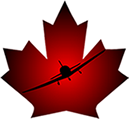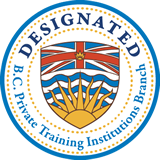 |
|
The Glide
“Touch us gently, Time! Let us
glide adown thy stream.
-
Barry Cornwall – Gliding is a
manoeuvre rarely practiced by most of us once flight training is completed.
Even during pilot training, gliding is often dealt with in a somewhat
perfunctory manner. The forced approach exercise is, by far, the most
commonly failed item on flight tests according to Transport Understanding
the basic mechanics of the glide and incorporating gliding practice into our
routine as a pilot can improve both skills and safety. Competence requires
two factors: training and practice. Hopefully, each of us will have had
adequate training at some point in our pilot careers. Practice to maintain
and improve skills once training is completed is up to each one of us. The
thought of having an engine failure 10 years after the last time I made an
opportunity to practice gliding doesn’t instil confidence. In the not too
distant past, power-off landing approaches with light aircraft were standard
practice and provided gliding practice on each landing. The reliability of
aircraft engines has improved greatly and, with both light and heavier
aircraft, the power-on, stabilized approach has become standard. This
practice has made landings a more certain endeavour, but it has reduced the
opportunity for pilots to practice gliding on a regular basis. For the most
part, we have to consciously seek out opportunities to practice this very
important skill to keep ourselves current and competent. The three
major factors we can consider as affecting glide are aircraft weight, angle
of attack, and wind. Aircraft weight is an interesting factor in relation to
gliding. We discussed this aspect last month when we talked about
descending. In normal
flight, there are four forces acting on an aeroplane: lift, weight, thrust,
and drag. In a glide, we have the unique situation of dealing with only
three forces: lift, weight, and drag. Thrust is absent. In a true glide, our
engine is stopped; no thrust is being produced. If we draw the
little triangles to help understand the forces active in a glide, we notice
the aircraft assumes a nose down, descending path. Lift acts upwards at
right angles to the direction of flight; drag acts opposite and parallel to
the direction of flight; weight acts at right angles to our altitude,
directly between the centre of gravity of the machine and the centre of
gravity of the earth. A portion of
the weight vector, what we call its horizontal component, acts not as thrust
but as though it was thrust,
parallel and in the same direction as our line of travel. The steeper our
angle of descent, the more weight provides assistance as though it was
thrust, overcoming drag and increasing airspeed. The greater the weight of
the aeroplane, the more assistance we derive. In a vertical dive—hold on to
your hats—all our weight would act as though it was thrust. Our glide
ratio, the ratio between distance over the ground and altitude lost, is
equal to our lift-to-drag ratio (1). In order to maximize the distance we
travel over the ground in a glide, we must achieve the best possible
lift-to-drag ratio (2). We may remember something similar from our study of
flight for maximum range where we also must achieve the best lift-to-drag
ratio (3). The angle of
attack for best lift-to-drag ratio is fixed. Since lift must equal weight in
a steady state, non-accelerated manoeuvre, the only variable left for us as
pilots to manipulate is airspeed (4). Very few
aeroplanes are fitted with an angle of attack meter so we use airspeed as
our primary source of information regarding angel of attack. When gliding,
we achieve best lift-to-drag angle of attack at different airspeeds
depending on the weight of the machine. A heavier machine will achieve best
lift-to-drag at the same angle of attack as a lighter one but will do so at
a higher airspeed. Regardless of
weight, two identical machines starting at the same altitude in the same
environmental conditions will arrive on the ground at the same spot, having
traveled exactly the same distance over the ground. The heavier machine,
however, will arrive more quickly. It’s sort of counterintuitive, but there
it is and we have the math to prove it. Wind is a very
important factor when gliding and should be considered carefully when making
a plan to arrive at a given point on the surface. We all know wind affects
ground speed, how fast we travel over the surface, but does not affect
airspeed. As William Kershner points out, in the event of an emergency, we
will probably be better off not overcomplicating an already complicated
situation (5). However, increasing airspeed slightly when gliding into a
headwind or reducing it slightly when gliding with a tailwind will increase
distance traveled over the ground. An easy Rule
of Thumb to keep in mind is to increase glide speed into a headwind by
one-half the headwind speed. In most cases, particularly if there is any
turbulence, it is not practical to slow the aircraft down very much in a
tailwind as we are already flying at low speed and do not wish to risk a
stall. With a
headwind, time is the enemy. We want to minimize the amount of time the
headwind is working against us. With a tailwind, time is our friend. In an
emergency, a better plan would most likely be to pick a landing site that
does not require us to get every possible inch out of our glide if that is
an option. There are two
basic types of glide most often considered: the minimum sink rate glide and
the maximum distance glide. Gliding for minimum sink rate is used to achieve
maximum time in the air at the sacrifice of distance. This can be a useful
manoeuvre in particular situations. You might find yourself without power
over flat ground, water, snow or a marshy area where altitude is difficult
to judge and arriving at a particular point is not be a priority. The speed for
minimum sink rate glide is closely related to the speed for maximum
endurance. The match is not exact because, even at the minimal power setting
for maximum endurance, the propeller is providing thrust and increasing the
airflow over the inside portion of the wings and the aircraft’s tail
section. With power off, the thrust and slipstream produced by even minimal
power is absent and the propeller itself, if it is allowed to windmill,
creates significant drag. The minimum
sink rate glide has both the advantages and disadvantages of low airspeed.
On the plus side, we will have as much time as can be obtained to assess our
situation and take positive action and we will arrive at the surface at as
low an airspeed as possible. This can be of great benefit to our survival:
impact increases with the square of the speed at contact. When gliding to
land, perhaps at night or in low visibility, on a surface that may be
difficult to assess, low speed is all to the good. Float pilots may be able
to relate this process to glassy water landings when it is challenging to
assess altitude above the surface prior to contact. The key is to establish
a low and stabilized rate of descent at low airspeed consistent with
maintaining control of the aeroplane and a low rate of descent. On the down
side, control problems may easily arise in turbulent conditions
necessitating a higher airspeed which reduces time in the air.
A basic Rule
of Thumb for the minimum sink rate glide for single engine, fixed gear
aeroplanes is to use 1.1 x Vs (KCAS) factored for weight (√aircraft
weight/gross weight). Not something we would want to calculate moments after
the engine quits on a dark night over the ocean, but something we could
spend a moment with on a rainy day in the comfort of our living room or
office and perhaps record on our checklist for future reference in the event
of need. The maximum
distance glide is probably a more commonly used number. It is closely
associated with the speed for maximum range, but, as with the minimum sink
rate glide, is not exactly the same. Your machine’s POH will normally
provide a generic number you can learn and use in the event you want to
practice or must execute a glide prior to a forced landing. The basic Rule
of Thumb for the maximum distance glide for single engine, fixed gear
aeroplanes is to use 1.3 x Vs (KCAS) factored for weight. Once again, I
can’t see myself pulling out a calculator in the event of an engine failure,
but playing with the numbers in a safe place where time is not a factor does
seem to help increase appreciation for where those numbers come from. As an example,
a quick look in the POH for our 1976 C-172 tells me “best glide speed” is 65
KIAS (66 KCAS) with flaps up and 60 KIAS with flaps down. Going back to the
Rule of Thumb, assuming gross weight, I calculate glide for maximum distance
with a most forward C of G as 65 KCAS. With a most aft C of G, it calculates
as 68.9 KCAS. Averaging the
two numbers comes out to 66.95 KCAS, call it 67 KCAS. Pretty close to
Cessna’s numbers. Just for the fun of it, I can factor for weight and find,
at 2100 lbs., maximum distance glide will be executed at 64 KCAS (rounded
off); at 1900 lbs., it is 61 KCAS (rounded off). Not terribly significant
differences, but there they are. On a practical
note, practicing the glide will keep required skills and techniques current
and provide an opportunity to improve those skills. It also allows us to
develop a greater sense of confidence in performing the manoeuvre should it
become necessary or useful. Playing with the machine for practice when we
are not faced with the stress of an emergency allows us to get a much more
solid handle on the whole problem and develop a much clearer sense of what
can or must be done to maximize the performance of a particular machine. A policeman
doesn’t want to start learning how to use his pistol moments after being
confronted by an armed felon; a school doesn’t want to start practicing fire
drills immediately following the discovery of smoke billowing from the
furnace room. It’s an
excellent idea to prevent your next gliding practice session from occurring
just following an unexpected stoppage of that little fan up front years
after the last time you tried it out. How much fun does a person really
need, after all? Enjoy. Notes:
|


